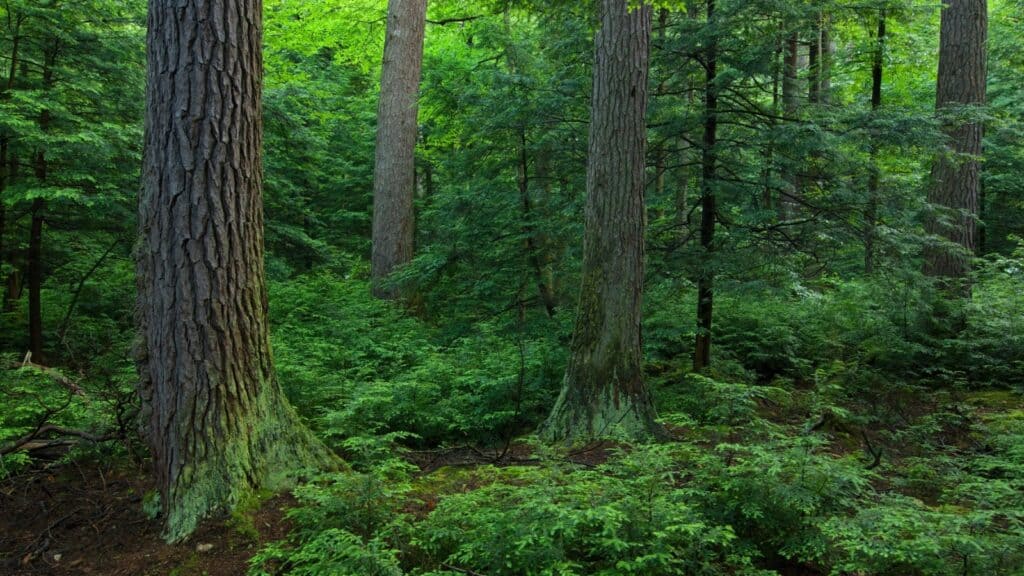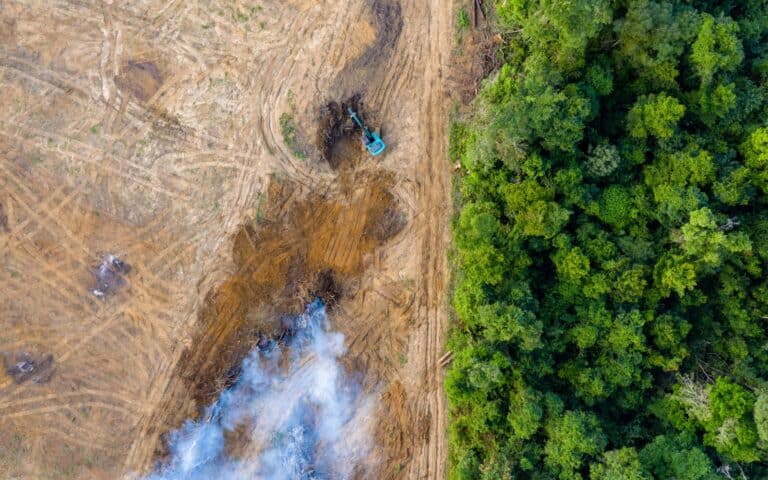20 American Trees Species We May Lose In Our Lifetime
Trees are vital components of our ecosystems, providing numerous environmental, economic, and social benefits. They absorb carbon dioxide, produce oxygen, stabilize soil, and support wildlife. However, many tree species in North America are facing severe threats that put them at risk of extinction. These threats include habitat loss, invasive pests, diseases, climate change, and over-exploitation. The following list highlights 20 American tree species that are either extinct or in danger of extinction, underscoring the urgent need for conservation efforts to protect these irreplaceable natural resources.
What Does “Critically Endangered” Mean?

The term “critically endangered” in the context of trees refers to tree species that are facing an extremely high risk of extinction in the wild, according to the classification by the International Union for Conservation of Nature (IUCN) Red List of Threatened Species.
The Red List

The IUCN Red List is the world’s most comprehensive inventory of the global conservation status of plant and animal species. It uses a set of quantitative criteria to assess the extinction risk of a given species based on factors such as:
Rate of Population Decline

This criterion assesses how quickly a species’ population is decreasing. A rapid population decline is a strong indicator of a species being at high risk of extinction. For a species to be classified as critically endangered, it must have experienced a population decline of ≥80% over the last 10 years or three generations, whichever is longer. This decline can be due to various factors such as habitat destruction, climate change, overexploitation, or disease.
Geographic Range

The extent of a species’ geographic range is a critical factor in its survival. Species with a very restricted range are more vulnerable to extinction because localized threats can have a devastating impact on their entire population. A species is considered critically endangered if its extent of occurrence is less than 100 km² or its area of occupancy is less than 10 km², especially if these areas are experiencing severe habitat fragmentation, decline, or extreme fluctuations.
Small Population Size

Species with small population sizes are more susceptible to extinction due to genetic bottlenecks, inbreeding, and demographic fluctuations. A species is classified as critically endangered if it has fewer than 250 mature individuals remaining in the wild, with a continuing decline of at least 25% within three years or one generation. This small population size makes it difficult for the species to recover from environmental changes or stochastic events.
Very Small Populations

Even smaller populations are at even greater risk. If a species has fewer than 50 mature individuals remaining in the wild, it is considered critically endangered. Such critically low numbers mean that any adverse event, such as a disease outbreak or habitat destruction, could lead to the species’ extinction.
Quantitative analysis showing a high probability of extinction

This criterion involves a quantitative analysis that models the probability of extinction for a species. If the analysis shows that the species has at least a 50% probability of going extinct in the wild within 10 years or three generations, it is classified as critically endangered. This analysis takes into account various factors such as population trends, habitat conditions, and known threats.
Criteria for Critically Endangered Trees

A tree species is classified as “Critically Endangered” if it meets any of the following criteria:
Population Reduction

The species has experienced a population decline of ≥80% over the last 10 years or 3 generations (whichever is longer), due to known causes.
Geographic Range

The species has a very restricted geographic range, with an extent of occurrence less than 100 km² or an area of occupancy less than 10 km², combined with severe habitat fragmentation, decline, or extreme fluctuations.
Population Size

The species has fewer than 250 mature individuals remaining in the wild, with a continuing decline of at least 25% within 3 years or 1 generation.
Very Small Population

The species has fewer than 50 mature individuals remaining in the wild.
Quantitative Analysis for Trees

A quantitative analysis shows that the species has at least a 50% probability of going extinct in the wild within 10 years or 3 generations.
Extinct Trees

These trees no longer exist in the wild.
- Crataegus delawarensis (Delaware hawthorn) – Extinct in the wild but exists in botanical gardens.
- Crataegus fecunda (Fecund hawthorn) – Extinct in the wild but exists in botanical gardens.
- Crataegus lanuginose (Woolly hawthorn) – Extinct in the wild but exists in botanical gardens.
- Franklinia alatamaha (Franklin tree) – Endangered due to the balsam woolly adelgid.
10 Endangered Trees

These trees are considered critically endangered:
- Florida Yew (Taxus floridana) – Critically endangered, found in a small area in northern Florida.
- North American Ash (Fraxinus spp.) -Threatened by the emerald ash borer.
- California Redwoods (Sequoia sempervirens and Sequoiadendron giganteum) – Endangered due to natural death and inadequate regeneration.
- Fraser Fir (Abies fraseri) – Endangered due to the balsam woolly adelgid.
- Loulu (Pritchardia spp.) – Endangered in Hawaii due to seed predation by rodents.
- American Chestnut (Castanea dentata) – Functionally extinct due to chestnut blight.
- Whitebark Pine (Pinus albicaulis) – Threatened by climate change and pests.
- Black Ash (Fraxinus nigra) – Threatened by the emerald ash borer.
- Butternut (Juglans cinerea) – Threatened by butternut canker.
- American Elm (Ulmus americana) – Threatened by Dutch elm disease.
10 More Endangered Trees

Here are 10 more trees that are endangered:
11. Eastern Hemlock (Tsuga canadensis) – Threatened by the hemlock woolly adelgid.
12. American Beech (Fagus grandifolia) – Threatened by beech bark disease.
13. Bristlecone Pine (Pinus aristata and Pinus longaeva) – Threatened by climate change and pests.
14. Bishop Pine (Pinus muricata) – Threatened by habitat loss and climate change.
15. Cuyamaca Cypress (Cupressus stephensonii) – Threatened by habitat loss and climate change.
16. Dawn Redwood (Metasequoia glyptostroboides) – Threatened by habitat loss and climate change.
17. Cedar of Lebanon (Cedrus libani) – Threatened by habitat loss and climate change.
18. Chilean Monkey Puzzle (Araucaria araucana) – Threatened by habitat loss and climate change.
19. Torreya taxifolia (Florida torreya) – Critically endangered due to habitat loss and disease.
20. Santa Cruz Cypress (Cupressus abramsiana) – Endangered due to habitat loss.
The Takeaway

The principal drivers leading to the critical endangerment of tree species include habitat loss and degradation, invasive species, overexploitation, diseases, and climate change. These threats can cause significant declines in population size, geographic range, and habitat quality, putting tree species at an extremely high risk of extinction in the wild.
Identifying and classifying critically endangered tree species is crucial for prioritizing conservation efforts, implementing targeted protection measures, and raising awareness about the urgent need to safeguard these irreplaceable components of our planet’s biodiversity.







